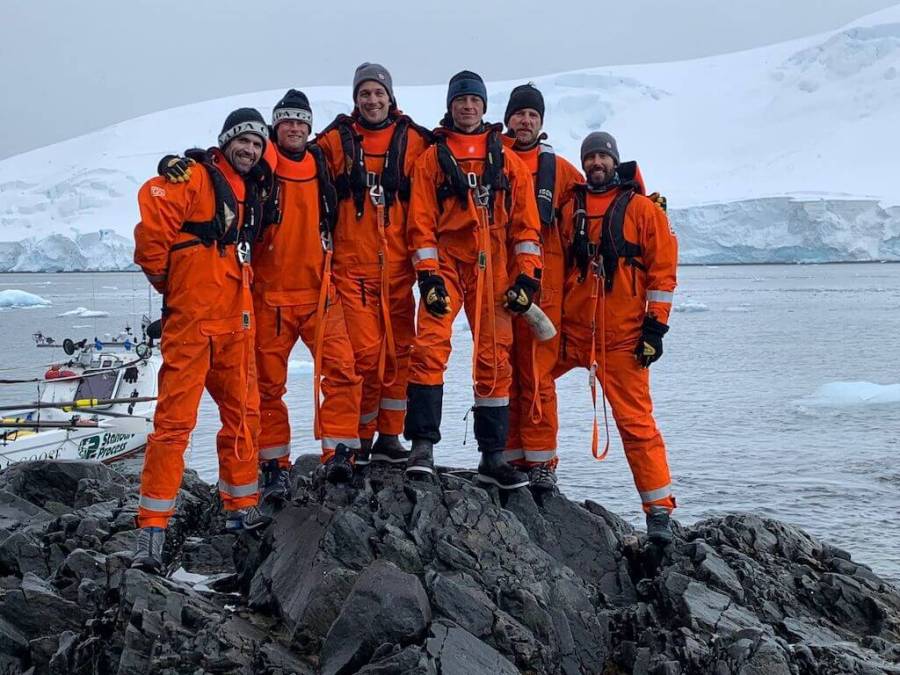Ocean rower Jamie Douglas-Hamilton reveals the record-breaking row that sparked the creation of a new kind of water.

Jamie Douglas-Hamilton, endurance rower and Actiph Water founder
In the summer of 2014, Jamie Douglas-Hamilton – grandson of the first man to fly over Mount Everest – was in a spot of bother. Floating in the middle of the Indian Ocean, he and the rest of the six-man rowing crew were battered, beaten and bereft of energy.
After setting off from south-west Australia, they had endured vicious storms, equipment loss, a mid-ocean rescue (after one of the crew suffered serious boiling water burns), and even a collision with a blue whale.
Now, with over 1,000 miles still to row before they would reach their destination of the Seychelles, fatigue, tension and hallucinations were taking their toll.
Until, that is, a moment of seeming madness turned the expedition around…
Jamie, talk us through the origins of Actiph Water.
“This all started when a group of six of us rowed from Australia to Africa. It’s very physical: you’re burning 10,000 calories a day, doing two hours on, two hours off, for two-and-a-half months.
“We were drinking anything from nine to 13 litres of water a day, and that is sea water that’s desalinated – so it’s pure water with very little salt.
“As a result, our electrolyte balances went right down, which caused all sorts of issues. We had much less power in the water – especially on the night shifts – and we were hallucinating quite a bit.
“One day, one of the crew mixed his fresh water with quarter of a bottle of sea water. We all thought he was going to end up frothing at the mouth and that it would be devastating for him, but it wasn’t.
“He encouraged us to try it and we were pretty surprised by the impact it had. Normally you would start to flag at the end of a two-hour session – the last 40 minutes would be very difficult – but actually we had power the whole way through, even on the night shifts.
“As a result, we broke two Guinness World Records: one for the fastest crossing and one for the longest crossing of the Indian Ocean. I don’t think that was because of how fit we were; I think it was because of what we drank.”
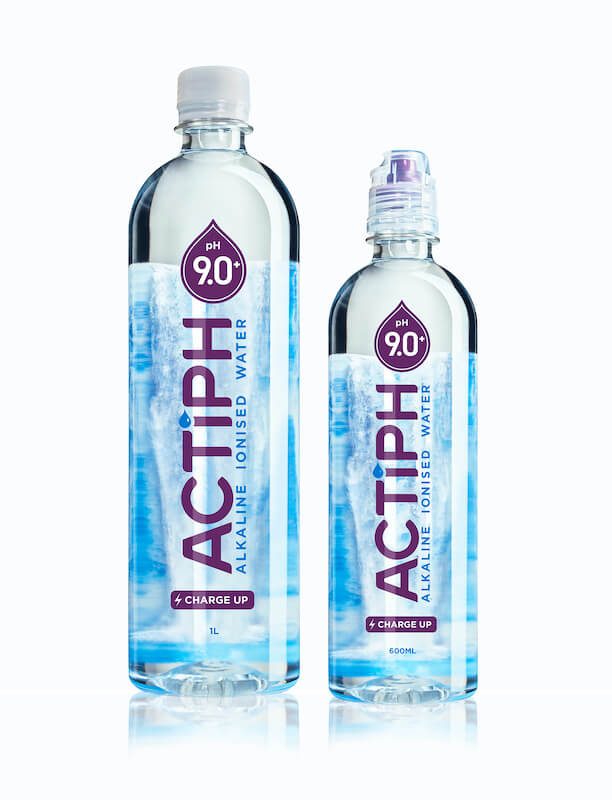
What exactly is Actiph water?
“After that row, I looked at the waters we have on the market in the UK and realised they’re always the same: spring, mineral or sparkling.
“No one had done anything different with the water on offer, which led me to research water all over the world. I came across the water on offer in Japan, which is ionised and alkaline.
“That involves splitting the water through a process of ionic separation, to create a very highly alkaline water that acts as an anti-inflammatory in the gut.
“It was first brought out for people with digestive issues, but it’s now being researched for its benefits into all sorts of ailments. It gets into the blood much quicker than ordinary water, and there was a big study done in 2016 – published in the International Society of Sports Nutrition – proving that.
“That led me to research the market in America, and alkaline water is the fastest growing beverage category in the US. No one had done it in Europe, though, which was the spark for Actiph.
“Two-and-a-half years after the launch, we’re now in 6,000 retailers and 15 countries. We’re looking to more than double that over the next nine months.”
So Actiph is a very different product to the sea water you were drinking in 2014?
“Yes! The sea water was the inspiration, but Actiph is ionised alkaline water. You can quite easily drink three litres of alkaline water throughout the day.
“The pH scale goes from 0-14, with 7 being neutral. Drinks like Coca-Cola are around 2, which is very acidic, and Actiph is bottled at 9.8.”
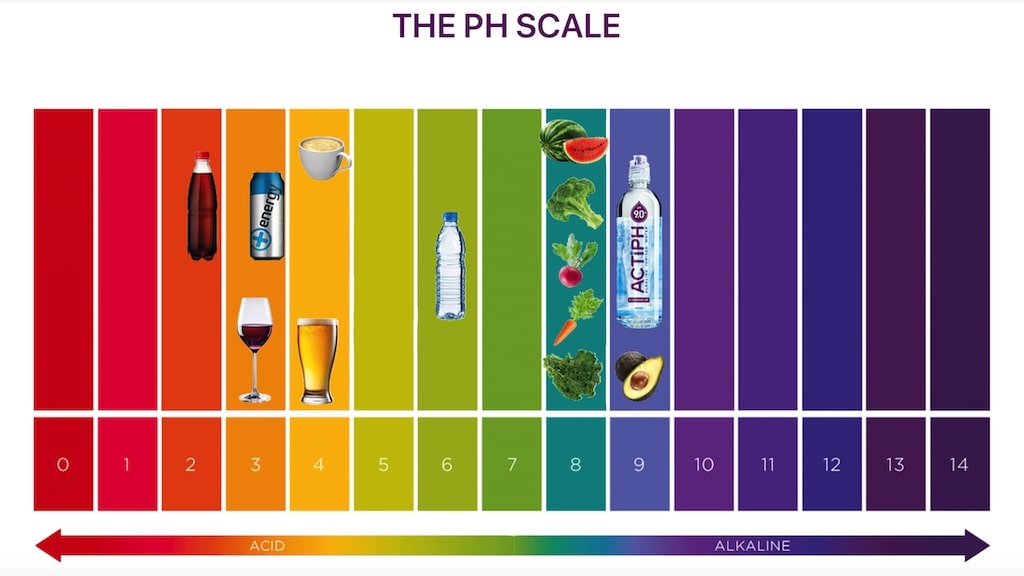
actiphwater.com
What are the main benefits of alkaline water?
“Our diets have become so acidic in the last 50 years – we eat more sugars, sweeteners and red meat – and even though your body will do everything it can to self-regulate, if you’ve got an acid diet you are putting more strain on your internal buffering systems to keep your blood at the high pH.
“Alkaline water means your body isn’t working so hard to regulate the pH imbalance, which means your efforts can be concentrated on the performance at hand.
“For sport it’s great, because it gets salt into your blood quicker. If you drink it day to day you will feel a more sustained energy.
“If you have energy drinks or coffee you will get sugar and caffeine highs, followed by lows, whereas alkaline water is a more sustained energy throughout the day.”
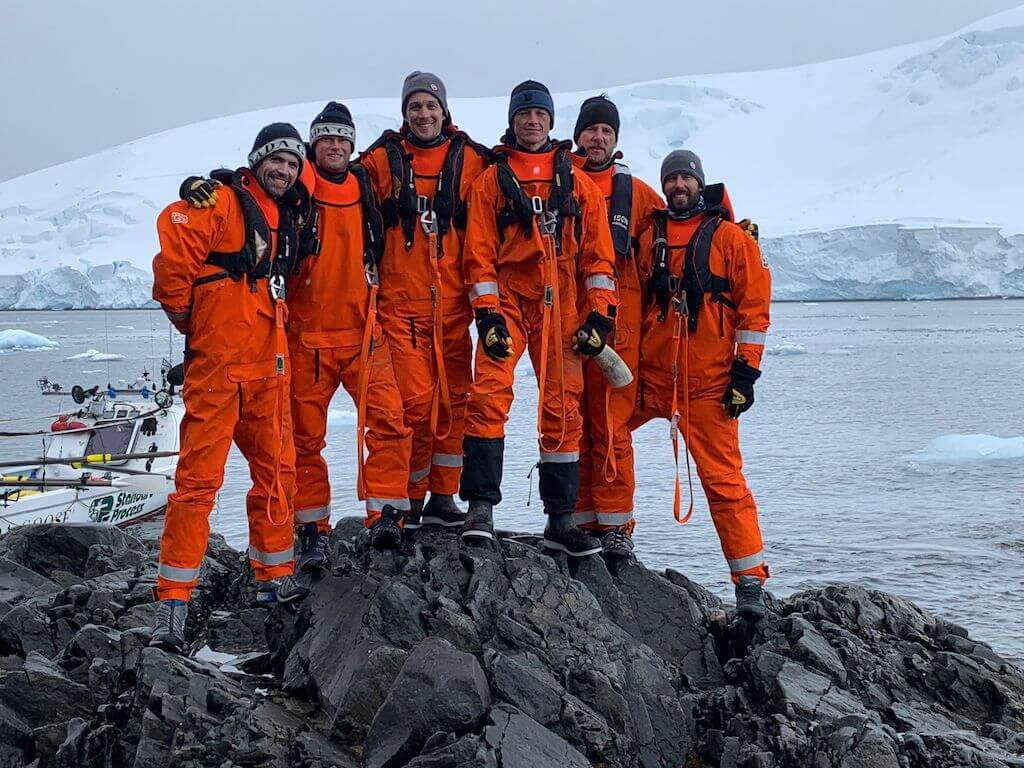
After arriving in Antarctica after making it across the infamous Drake Passage
Away from Actiph, you and your team recently became the first to row across the Drake Passage. What makes that such a feat?
“The Drake Passage has been feared by sea-farers for hundreds of years. It’s estimated almost 10,000 people have died trying to cross it. The Passage is where the Atlantic, the Pacific and the Southern Oceans meet – in-between South America and Antarctica.
“You’ve got all these Oceans meeting at a very narrow choke point, and you’ve also got the Antarctic Circumpolar Current – the most powerful and only fully looped current in the world – which goes from west to east.
“You put all that together and you get huge waves, 60ft and more, that go for hundreds of thousands of miles, because there’s no land mass to stop them. All of that energy is focused onto the choke point that is the Drake Passage.
“You also have all the right ingredients for incredibly violent storms, and add to that the fact that you’re not rowing with the current: you’re rowing across it. In a very small boat. With enormous waves.
“Apart from that, you’re constantly soaked, cold, and by the end we developed frostnip: our fingers and toes went completely white and numb. It’s very hard to get any feeling in them or move them at all – even opening food or hatches becomes a real struggle.
“You’re also burning a huge amount of calories. I lost two stone in the 12 days we were out there. We were doing 90 minutes on, 90 minutes off, but you have to put absolutely everything in to those 90 minutes.
“Those 12 days felt like four to six weeks. It was a long, long time. The Southern Ocean never gives you a break. Every time you think you’re out of a storm, another comes through – invariably worse than the last one. I was amazed we didn’t get capsized.”
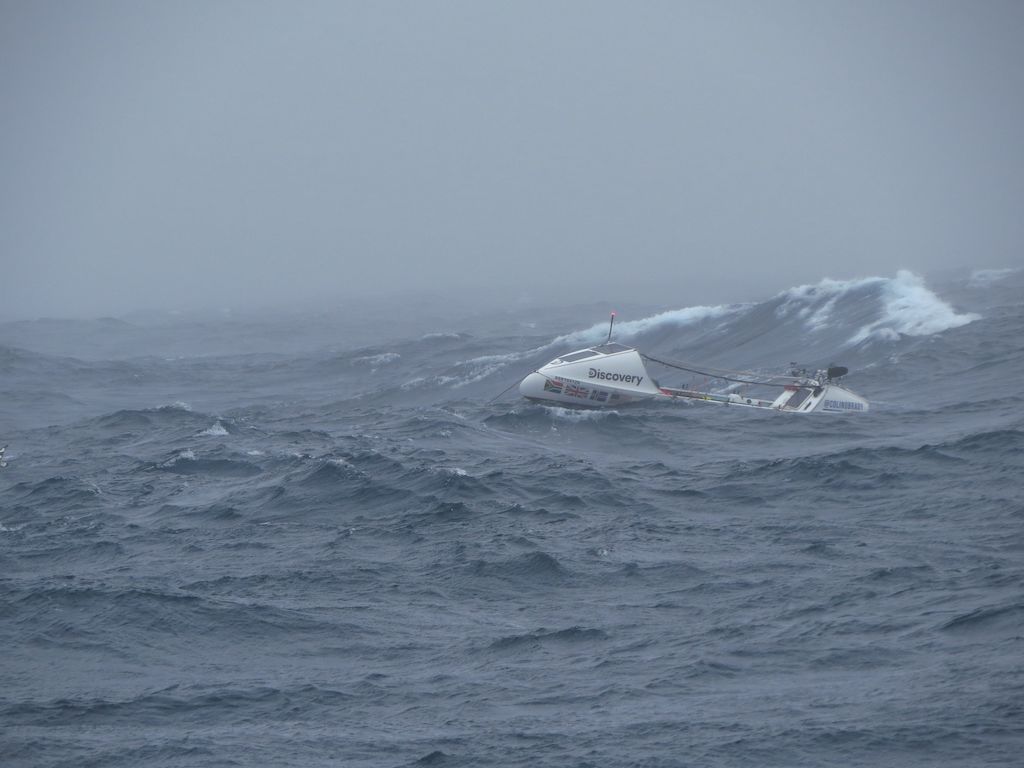
The Drake Passage is home to some of the world’s most turbulent sea conditions
How did you prepare physically and mentally for such an extreme challenge?
“For an expedition like that, it usually takes about a year of training to get into it. But you want to get into the sleep deprivation, so you have a rowing machine in your room and you set your alarm for different times each night.
“One night you might set it for 3am and the rule is that as soon as it goes off you need to be out your bed and rowing within ten seconds. You’re not even thinking – it’s just out, on.
“You row for one hour, and when you’re done you can’t go to the loo or have a shower, you just have to get back into bed – dripping with sweat – and go to sleep. That gets you prepared for getting up and getting it done, no matter how tired you are.
“The other thing is to convince your subconscious mind that everything you are doing is easy. I was saying, over and over in my head, ‘This is nothing, you can go forever. This is nothing, you can go forever.’
“That way, even when you’re in a storm and conditions are appalling, you can convince yourself that it’s the easiest thing in the world.
“The last tactic is to mentally cut off everything around you: don’t think about your girlfriend, don’t think about your family. You need to have 100 per cent focus on the job at hand. All that matters when you’re out there is the little bubble that you’re in.
“I’ve seen a lot of rowers who have been extremely fit physically, but mentally they’ve lost it.
“Sometimes it is a disadvantage being an excellent rower, because you know how to pull the perfect stroke on flat water, how to be the most efficient and so on, but suddenly you’re out there in weather that makes it impossible to get both oars in the water, it’s cold, miserable and everything about it is tough. I would say 90 per cent of it is mental.”
Actiph Water is available to buy from Sainsbury’s, Tesco, Holland & Barrett, Whole Foods, WHSmith or online at Ocado and Amazon. actiphwater.com

